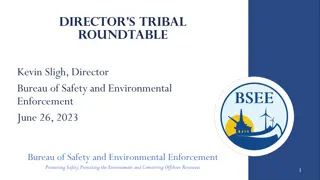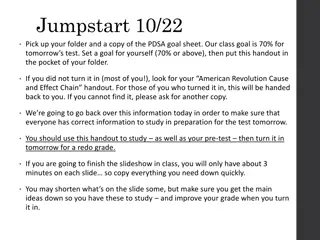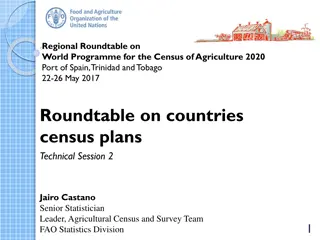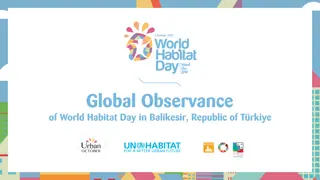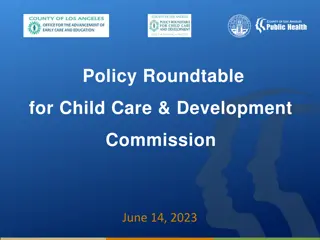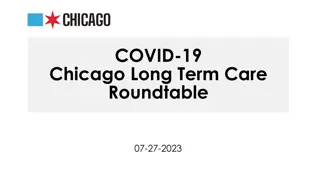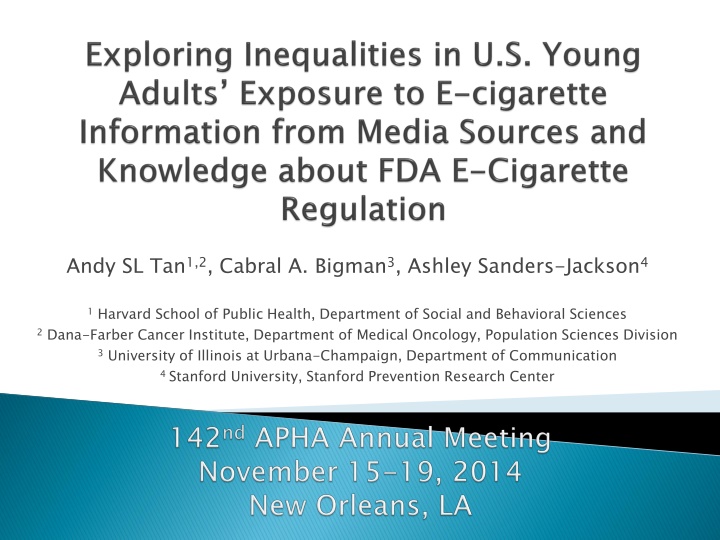
Media Exposure & Knowledge Gaps on E-cigarettes among Young Adults
Explore inequalities in young adults regarding exposure to e-cigarette media sources and knowledge about FDA regulations. The study examines how sociodemographic factors, media exposure, and regulatory knowledge are related. The FDA does not currently regulate e-cigarettes, and media coverage may impact public perception and safety inferences. Data collected in 2013 from a US web panel of young adult participants reveal emerging communication inequities on e-cigarette regulations. Test your knowledge on FDA regulations for e-cigarettes with true or false statements.
Download Presentation

Please find below an Image/Link to download the presentation.
The content on the website is provided AS IS for your information and personal use only. It may not be sold, licensed, or shared on other websites without obtaining consent from the author. If you encounter any issues during the download, it is possible that the publisher has removed the file from their server.
You are allowed to download the files provided on this website for personal or commercial use, subject to the condition that they are used lawfully. All files are the property of their respective owners.
The content on the website is provided AS IS for your information and personal use only. It may not be sold, licensed, or shared on other websites without obtaining consent from the author.
E N D
Presentation Transcript
Andy SL Tan1,2, Cabral A. Bigman3, Ashley Sanders-Jackson4 1Harvard School of Public Health, Department of Social and Behavioral Sciences 2Dana-Farber Cancer Institute, Department of Medical Oncology, Population Sciences Division 3University of Illinois at Urbana-Champaign, Department of Communication 4 Stanford University, Stanford Prevention Research Center
Explore inequalities in young adults: Exposure to media sources of information about e-cigarettes and Knowledge about regulatory status of e-cigarettes Describe relationship between sociodemographic factors, exposure to media about e-cigarettes, and knowledge of FDA regulatory status. Discuss possible implications of inequalities in e- cigarette media exposure among young adults.
The U.S. Food & Drug Administration (FDA) does not currently regulate e-cigarettes. E-cigarette media coverage has increased. Media coverage could influence public perceptions about the regulatory status of this novel product. Perceptions of regulation are important because incorrect knowledge about FDA regulation may lead people to make inaccurate inferences about product safety.
This study explores whether communication inequalities and knowledge gaps about e- cigarette regulations are emerging among young adults. We examine relationships between sociodemographic characteristics, exposure to mediated information about e-cigarettes, and knowledge of FDA regulation.
Data were collected in September 2013 Participants (aged 18-34 years) were members of a 6,000-person US web panel Part of a larger experimental study (presented elsewhere) that had no significant effect on the results Panelists were: E-cigarette users (n=300) Smokers (n=301) Non-users (n=299) Completion rate was 78%
Please tell us whether the following statements about e-cigarettes are true, false or you don t know. The Food and Drug Administration (FDA) regulates e-cigarettes for safe use 1. The Food and Drug Administration (FDA) has approved e-cigarettes to help quit smoking 2. Response options were True/ False/Don t know Correct response is False for both measures
How often have you seen or heard something about e-cigarettes from the following sources in the past 30 days? 1. News stories 2. Talking to people through social media 3. Entertainment programs Responses ranged on a 4-point scale from never to 5 times or more .
Logistic regression models to predict knowledge of FDA regulation of e-cigarette for safety and smoking cessation with: Sociodemographic characteristics Exposure to e-cigarette information through advertising, news, social media, and entertainment media Moderation analyses to examine whether sociodemographic factors moderated the associations between media exposure and regulatory knowledge.
n % n % Gender Male Female Age (years) 18-24 24-34 Race/ethnicity Non-Hispanic white 556 61.7 Non-Hispanic black Hispanic Other Educational level High school and below Some college College or higher Smoking status Non-smoker Non-daily smoker Daily smoker Vaping status No vaping in the past 30 days 706 78.4 Vaped in the past 30 days 450 50.0 450 50.0 205 22.8 338 37.5 357 39.6 451 50.1 449 49.8 324 36.0 269 29.9 307 34.1 91 10.1 149 16.5 105 11.7 194 21.5
News Stories Social Media Entertainment 60 52 50 47 44 40 Percent Percent 30 26 21 20 16 14 13 13 11 11 9 9 10 7 7 0 Never Once or twice Three or four times Five times or more Not sure/ don't remember
The Food and Drug Administration (FDA) regulates e The Food and Drug Administration (FDA) regulates e- -cigarettes for safe use cigarettes for safe use 100 77.8 80 60 Percent Percent 40 22.2 20 0 False (correct response) True/Don't know
The Food and Drug Administration (FDA) has approved e The Food and Drug Administration (FDA) has approved e- -cigarettes to help quit smoking cigarettes to help quit smoking 100 77.8 80 60 Percent Percent 40 22.2 20 0 False (correct response) True/Don't know
Social media websites News stories about e-cigarettes Entertainment programs other than news Predictor variables Gender (Female) Age (24-34 years) Race/ethnicitya Non-Hispanic black Hispanic Other Educational levelb Some college College or higher Smoking and vaping statusc Smoker Vaper -0.35 (-0.47,-0.22)*** 0.03 (-0.10,0.17) -0.26 (-0.40,-0.12)*** 0.01 (-0.14,0.15) -0.25 (-0.39,-0.11)*** 0.02 (-0.13,0.16) 0.28 (0.06,0.49)* 0.31 (0.14,0.49)*** 0.13 (-0.07,0.33) 0.11 (-0.11,0.34) 0.44 (0.25,0.62)*** 0.18 (-0.04,0.40) 0.29 (0.06,0.52)* 0.31 (0.12,0.50)** 0.20 (-0.02,0.42) 0.00 (-0.16,0.17) 0.34 (0.18,0.51)*** 0.07 (-0.11,0.25) 0.33 (0.15,0.52)*** 0.02 (-0.16,0.20) 0.28 (0.10,0.47)** 0.45 (0.29,0.60)*** 0.72 (0.56,0.87)*** 0.52 (0.35,0.68)*** 0.87 (0.70,1.03)*** 0.48 (0.31,0.65)*** 0.74 (0.57,0.90)*** Constant 1.73 1.48 1.60 Notes: Adjusted unstandardized coefficients (95% CI) are reported here; areferent is non-Hispanic White; breferent is high school or below; creferent is non-smoker/vaper; *p<.05, **p<.01, ***p<.005.
Age all three sources between young adults at different age groups. Age: There were no significant inequalities in frequency of exposure to Gender news, social media, and entertainment sources compared with women. Gender: Men reported more frequent exposure to such information from Race/Ethnicity frequent exposure than Whites from all three sources. Black participants had higher exposure than Whites from news and entertainment programs. Race/Ethnicity: Hispanic participants consistently reported more Education e-cigarette information from news, social media, and entertainment than those who had high school or lower education. Education: Those with college or higher education had more exposure to Tobacco use frequency of coming across e-cigarette information from all three sources than non-smokers/vapers. Tobacco use: Smokers and vapers reported significantly higher
FDA does not regulate e-cigarettes for safe use Model 1 Predictor variables News Social media Entertainment 0.70 (0.53,0.93)* 0.93 (0.72,1.21) 1.15 (0.88,1.50) Notes: Adjusted odds ratio (95% CI) are reported here. *p<.05, **p<.01, ***p<.005. Covariates included in the model were age, gender, race/ethnicity, education, smoking status, and vaping status. News exposure associated with reduced accurate knowledge that FDA does not regulate e-cigarettes for safe use. No significant interactions between media exposure variables and sociodemographic factors or vaping status.
FDA does not regulate e-cigarettes for helping to quit smoking Model 2a (main effects) Model 2b (interaction of news and education) Model 2c (interaction of news and vaping status) Predictor variables News Social media Entertainment Educational level High school and below (referent) Some college College or higher Vaping status No vaping in the past 30 days (referent) Vaped in the past 30 days News X Some college News X College or higher News X Vaped in the past 30 days Constant 1.01 (0.78,1.32) 0.88 (0.68,1.14) 0.92 (0.70,1.20) 1.23 (0.82,1.86) 0.90 (0.69,1.17) 0.91 (0.69,1.20) 1.38 (0.93,2.03) 0.91 (0.70,1.18) 0.90 (0.69,1.19) 1.00 1.17 (0.74,1.85) 1.15 (0.77,1.72) 1.00 0.92 (0.37,2.29) 2.20 (0.87,5.59) 1.00 1.01 (0.65,1.56) 0.88 (0.56,1.40) 1.00 0.86 (0.56,1.32) - - - 0.39 1.00 0.87 (0.56,1.35) 1.05 (0.66,1.66) 0.60 (0.38,0.94)* - 0.31 1.00 1.54 (0.77,3.08) - - 0.84 (0.71,0.99)* 0.36 Notes: Adjusted odds ratio (95% CI) are reported here. *p<.05, **p<.01, ***p<.005. Covariates included in the model were age, gender, race/ethnicity, education, smoking status, and vaping status.
0.6 Adjusted Predicted Probability 0.4 0.2 0.0 Never 3 or 4 times Once or twice 5 times or more Frequency of exposure to e-cigarette information from news in the past 30 days High school and below Some college College and higher
0.6 Adjusted Predicted Probability 0.4 0.2 0.0 Never 3 or 4 times Once or twice 5 times or more Frequency of exposure to e-cigarette information from news in the past 30 days Smoker Vaper Non-smoker/vaper
Inequalities in media exposure by gender, race/ethnicity, education, and tobacco use status. News exposure associated with reduced accurate knowledge that FDA does not regulate e-cigarettes for safe use. Association between news exposure and knowledge that the FDA does not regulate e- cigarettes for helping to quit smoking was moderated by education and vaping status.
Lack of accurate knowledge about FDA regulation may lead people to make incorrect inferences about product safety. Consumers may adopt e-cigarettes more readily based on an inaccurate heuristic (i.e. the FDA is regulating e-cigarettes for safe use).
Study results may not be generalizable to the national young adult population. Media exposure data were self-reported. Causal directions are unclear from these cross-sectional analyses. Lack of information on the specific content and valence of e-cigarette information respondents were exposed to.
The majority of young adults in this sample did not know about the regulatory status of e-cigarettes. News exposure was associated with reduced accurate perceptions of e-cigarette regulations. News exposure interacted with education and vaping status for one knowledge outcome. This study offers insight on the potential impact of news exposure on young adults misperceptions of the regulatory status of e- cigarettes. Further research to assess the impact of news exposure and perceptions of e-cigarette regulations on adoption of e-cigarettes is recommended.








